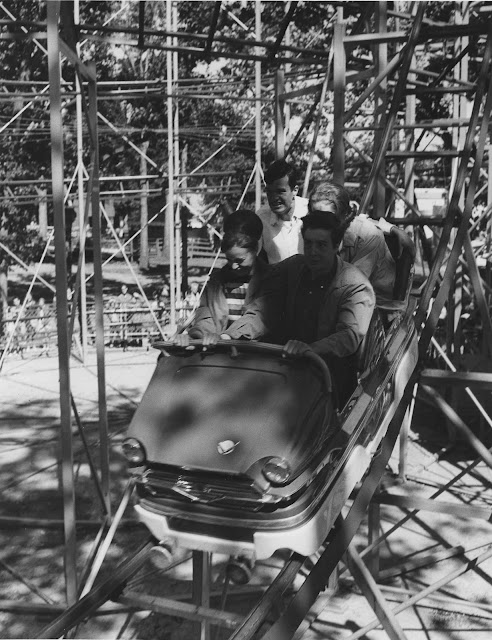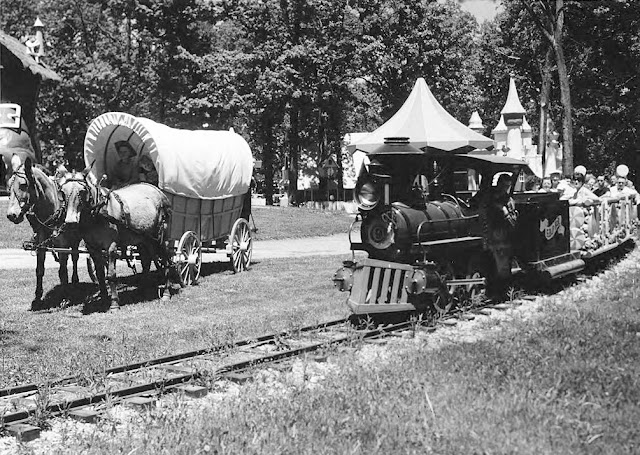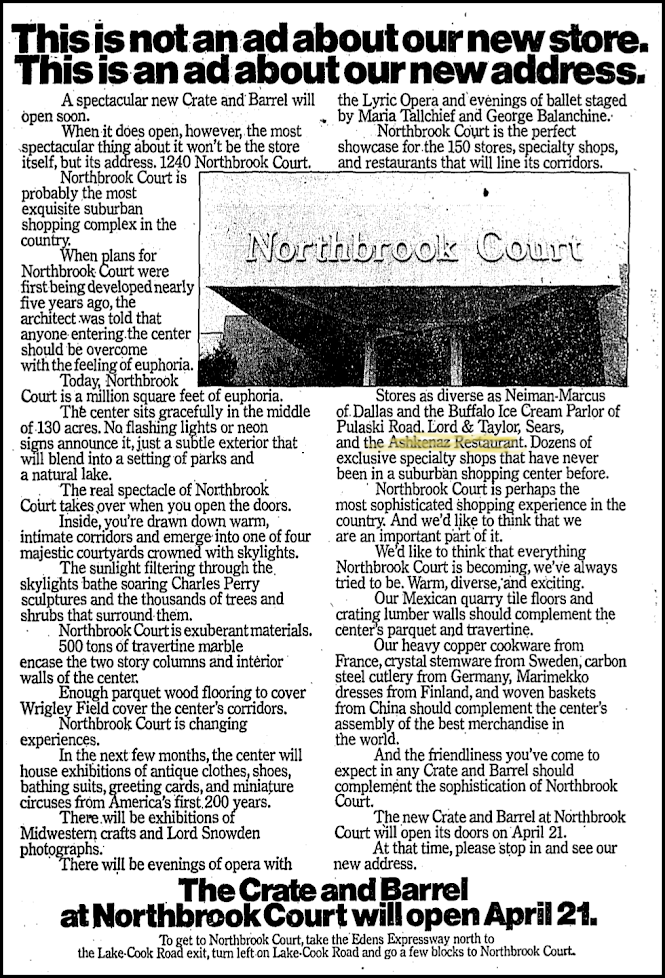Today the property is in Bloomingdale, Illinois. The address would be approximately 383 East Lake Street.
 |
| At the main gate, visitors were greeted by three giant statues; a pirate, a cowboy, and an Indian. |

The land that Storybook Park sat on was originally owned by Paul Werner and was known as "Paul's Grove," which sat on 24 acres with two buildings on the property. One building was the restaurant and tavern. The other was a big hall for banquets and dancing.
The Grove was purchased by John and Marie Spiezio in 1952 and they managed the park until 1958. Then sometime in 1958, the land was purchased by Richard Barrie. Storybook Park opened in 1958 (later the name was changed to "Storybook City, USA") as an attraction for families with young children. (Richard Barrie was the founder and owner of the private, corporate event amusement and picnic park called, "Hillcrest Park" in Woodridge [formerly Lemont], from 1952 to 2003.)
Barrie ran into financial difficulty, and the park was sold to Durell Everding in 1961. Everding renamed the park to "Adventureland Park" and expanded the focus of the park to include older children, teens, and young adults. The Storybook Park structures remained and the kiddie rides were grouped together in a section he called the "Kiddie Korral."
At some point in the early to mid-1960s, the name Adventure Land turned into a one-word name; Adventureland.
Everding died in 1970, and the park was run by his stepbrothers and a stepsister until it was purchased by Medinah Investors.
In the late 1960s and early 70s, the park held dances and featured a house band playing in the evenings. Local rock groups, such as the Cryan Shames and Aliotta, Haynes & Jeremiah (famous for the Chicago song: "Lake Shore Drive") also appeared there. In the mid-1970s, a disco opened on the site, complete with a certified disco dance instructor.
In 1967, Adventureland became the largest amusement park in Illinois, following the closure of the larger Riverview Park. It would retain this title until Marriott's Great America opened in 1976 (now Six Flags Great America since 1984).
Groups of inner-city children were bused to the park as part of a Chicago summer program. This, along with a general increase in minority attendance, caused some racial problems at the park to escalate.
Adventureland closed in 1977. It's possible that several factors were responsible for the closure, including racial tensions (security & insurance issues) and competition from other amusement parks like Great America.
The Original "Old Woman Who Lived in a Shoe" from Storybook Park can be seen at the miniature golf course at Green Valley Golf Range in Hanover Park, Illinois.
ADOPTED FROM STORYBOOK PARK
Cinderella's Coach, Circus Express, Candy Cane Train, Prince Charming's Castle, Doll House, Firehouse, Humpty Dumpty, Lollipop Train, Old Woman in a Shoe, Peter Peter Pumpkin Eater, Windy Wilbur, Hungry Tiger.
RIDES THROUGHOUT THE PARKS LIFE
Adventureland Express Miniature Railroad, Italian Bobs, Super Italian Bobs, Kiddie Roller Coaster, Hydraulic Parashoots, Scrambler, Torpedo Tubs, Western Round-Up, Italian Super Bumper Cars, Helicopters, Giant Whip, Octopus, Caterpillar, Ferris Wheel, Fighter Planes, Paratroopers, Electric Cars, Tubs of Fun, Century Flyer, Rock-O-Plane, Rollo Plane, Tilt-a-Whirl, Super Himalaja, Yo-Yo Swings, Flying Bobs, Two Seater Go-Carts, Fast Go-Carts. Jet Ride, Flying Zepher, Carousel, Covered Wagon, Fire Engine, Live Animal Rides, Electric Whale Lake, New Orleans Street Car, Cable Cars.
1890 Lollipop Train, Alligator Boats, Flying Swans, Fishing Boat Ride, Whale Paddle Boats, Cars, Motorcycles.
OTHER ATTRACTIONS
Hofbrau Fun House, Petting Zoo, Giant Slide, Tree House Slide, Picnic Area, Snack Bars, Souvenir Stands, Concession Stands, Skee Ball Arcade, Game Arcades, Slot Car Racing, Miniature Golf, Shooting Gallery.
VIDEO
Adventureland "A Look-Back."
CLICK ON PHOTOS FOR A FULL-SIZE VIEW














































































Visit our Souvenir Shop on your way out.




































































































































.png)


